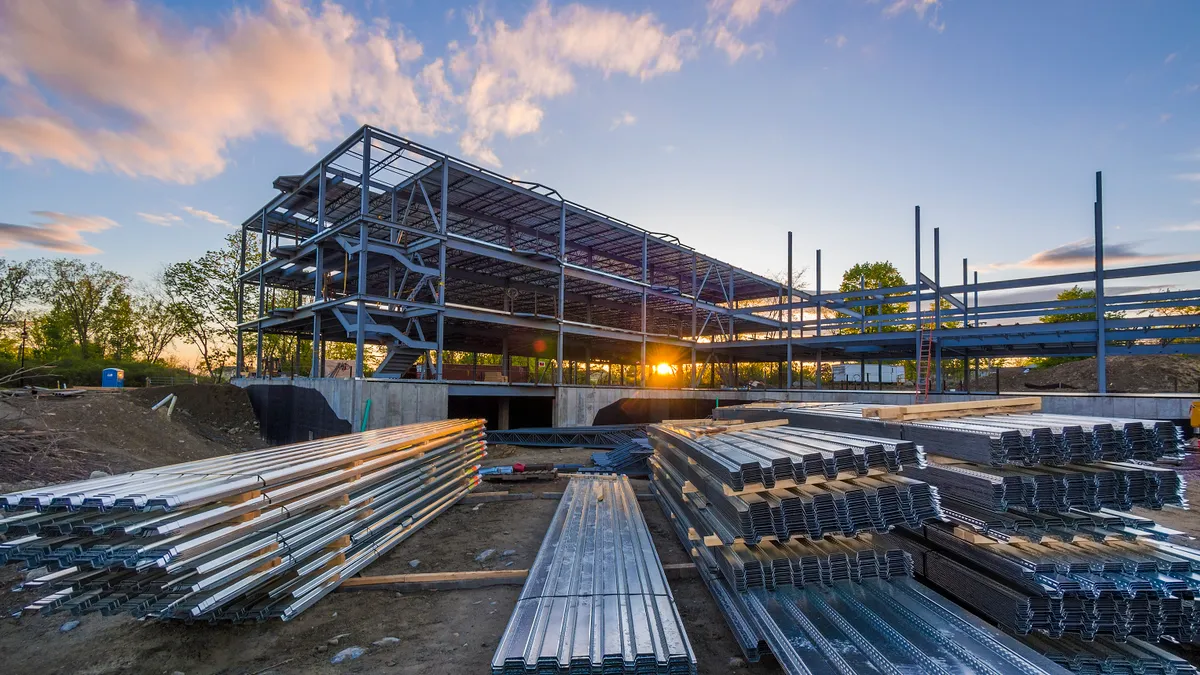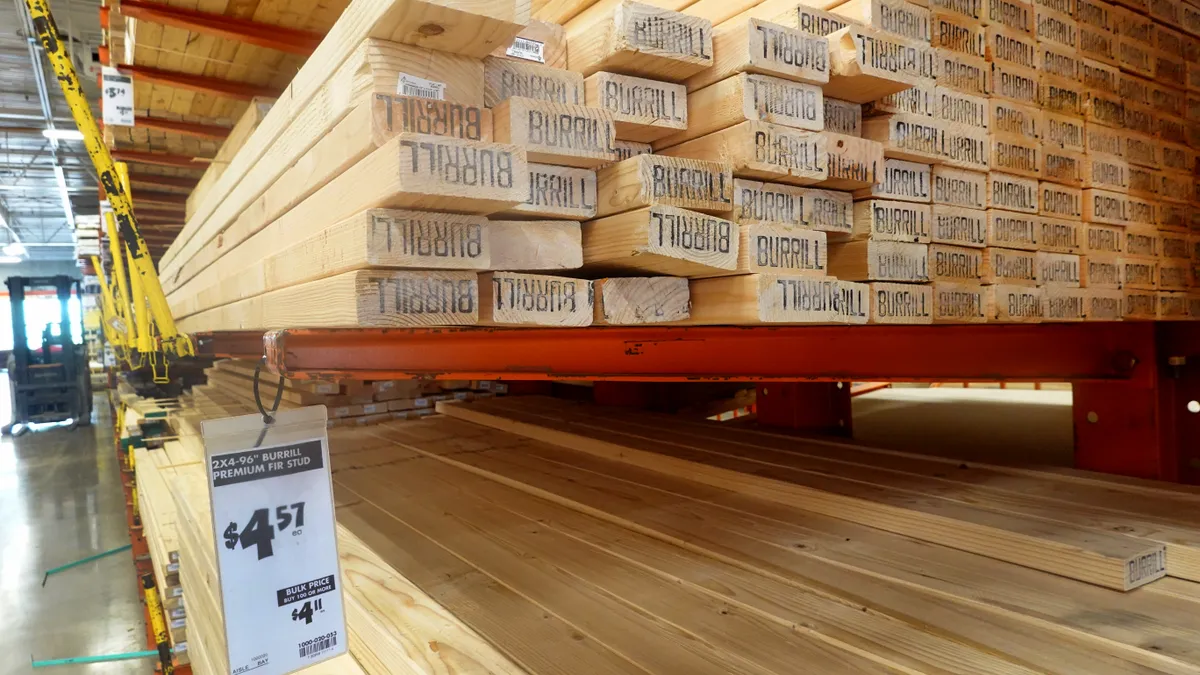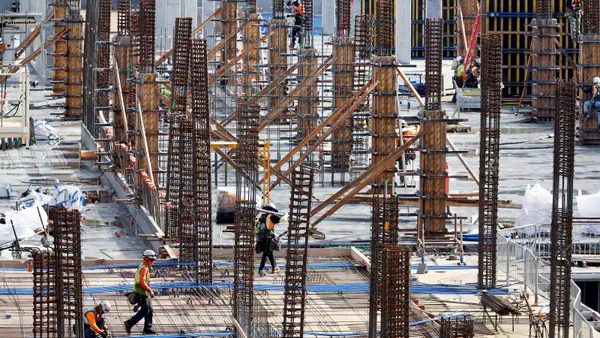Dive Brief:
-
Construction spending rose slightly from July, increasing 0.5% to a seasonally adjusted annual rate of $1.218 trillion in August, the Commerce Department reported Monday.
-
Private residential construction lifted 0.4% in August to a rate of $521 billion, while private nonresidential construction increased 0.5% to a rate of $432 billion for the period. Within private residential, single-family inched up 0.3%, while multifamily rose 0.9%. Public construction edged up 0.7% during the period.
-
Construction spending was up 2.5% year-over-year in August, with spending in the first eight months of 2017 4.7% ahead of the year-ago period.
While spending has steadily decreased since March, the category is likely to pick back up as construction crews begin to rebuild the hurricane-damaged South following back-to-back storms in Florida and the Gulf Coast. (U.S. construction spending in trillions of dollars, seasonally adjusted, revised figures)
Dive Insight:
Construction spending started 2017 off strong, contributing to industry-wide optimism for solid activity throughout the year. Those numbers have steadily declined since March, though modest increases in this month's report could point to a change in direction.
Meanwhile, the value of construction starts is pacing slightly below expectations. Heading into 2017, Dodge Data & Analytics projected the figure to increase 5% year-over-year to reach $712.9 billion for the year. In its latest report, Dodge put 2017 starts values at a seasonally adjusted annual rate of $711.6 billion in August.
Spending is likely to pick back up as construction crews begin to rebuild the hurricane-damaged South following back-to-back storms in Florida and the Gulf Coast. Together, Hurricanes Harvey and Irma left up to an estimated $200 billion worth of damage, according to Moody's.
The ongoing shortage of skilled labor is likely to impact rebuilding, with labor conditions today more strained than they were immediately following Hurricane Katrina, according to Slate. More still, seven in 10 contractors across the U.S. reported difficulty finding qualified workers even before the hurricanes, the Associated General Contractors of America found in a survey this summer.
While finding skilled workers will remain an ongoing issue, industry employment in August was the strongest since February thanks to an upturn in the U.S. labor market overall. The trend is set to continue due to a strong and stabilizing construction backlog and rising demand for design services.
Many still hope to see spending lift from President Donald Trump's $1 trillion infrastructure plan. But a lack of detail and an indeterminate timeline for the program has dampened their outlook. Although the White House has said it expects to release a formal plan this fall, lawmakers likely won't debate the issue until sometime next year.
The president further muddied the waters last week when he pulled back on the idea of using private spending for public infrastructure — formerly a key tenet of his proposal. That move could shift the proposal toward direct federal spending on infrastructure, to which Republicans have been strongly opposed, along with more help from state and local governments.













